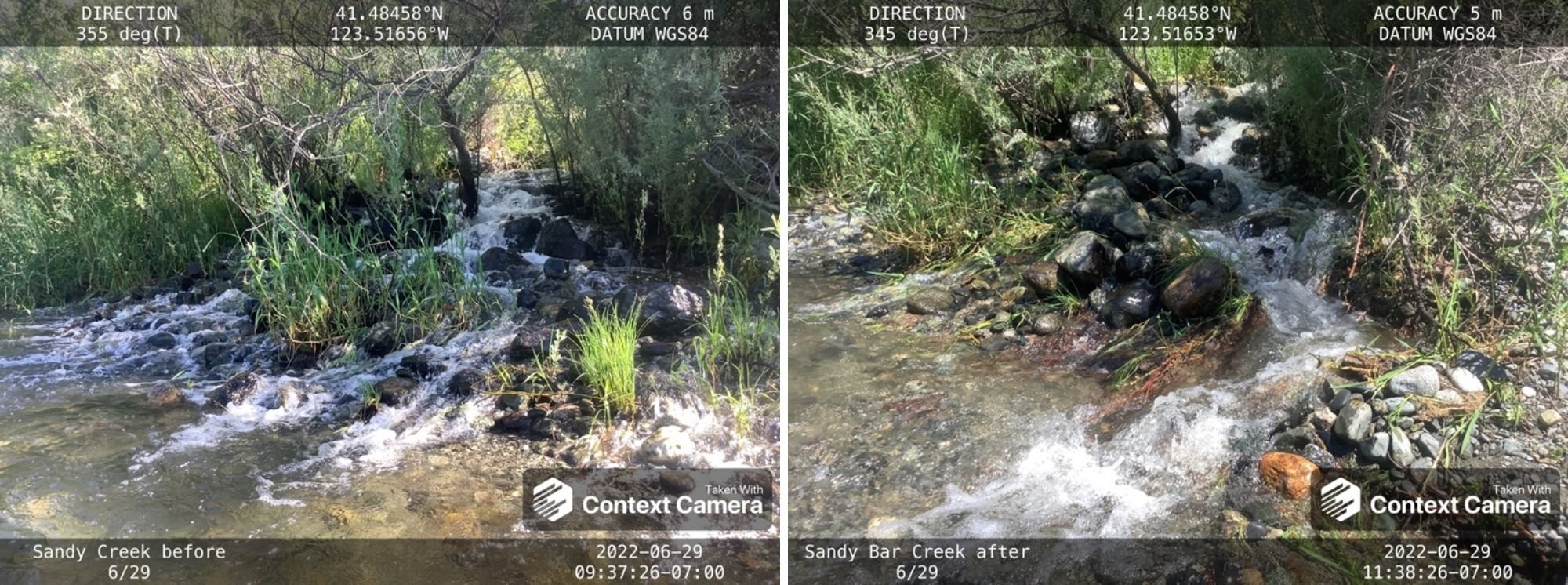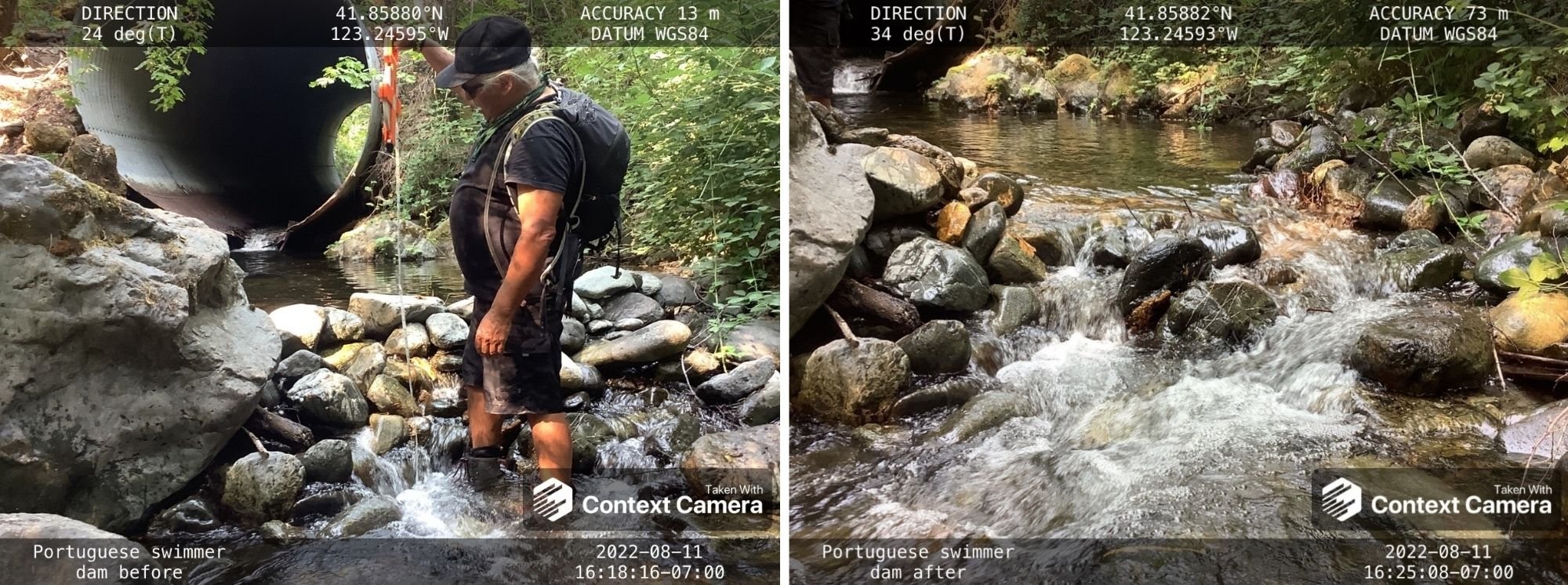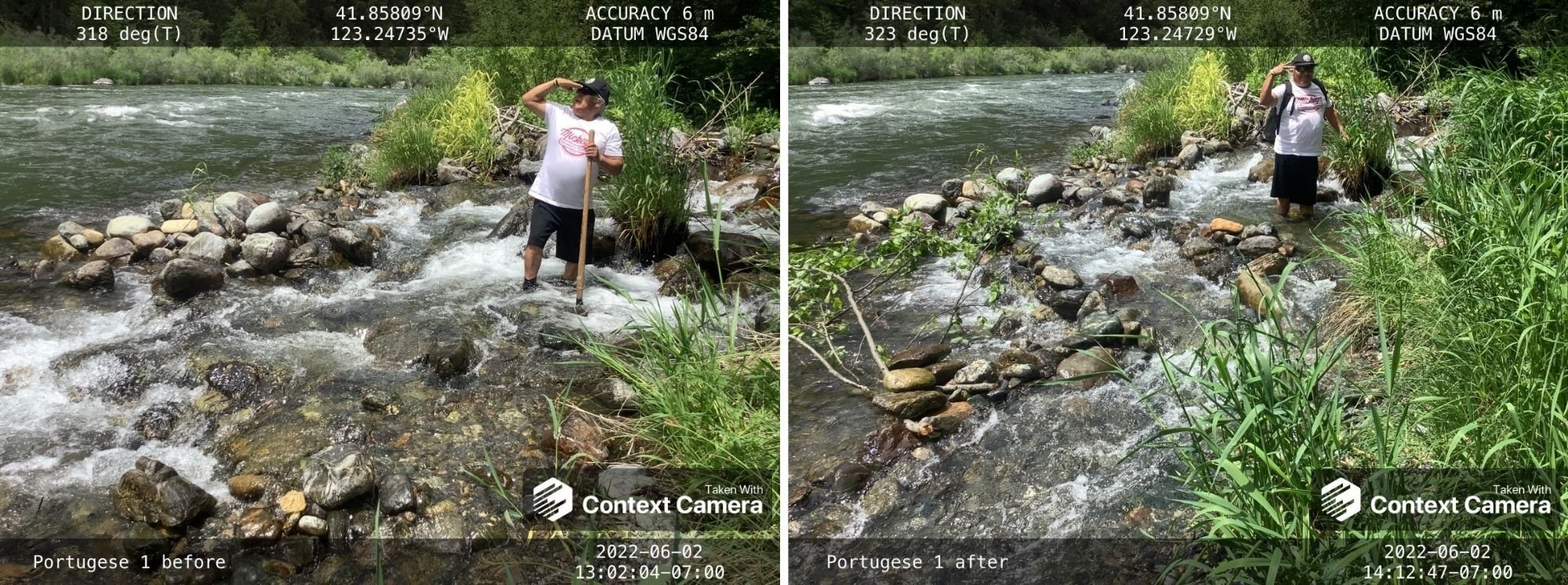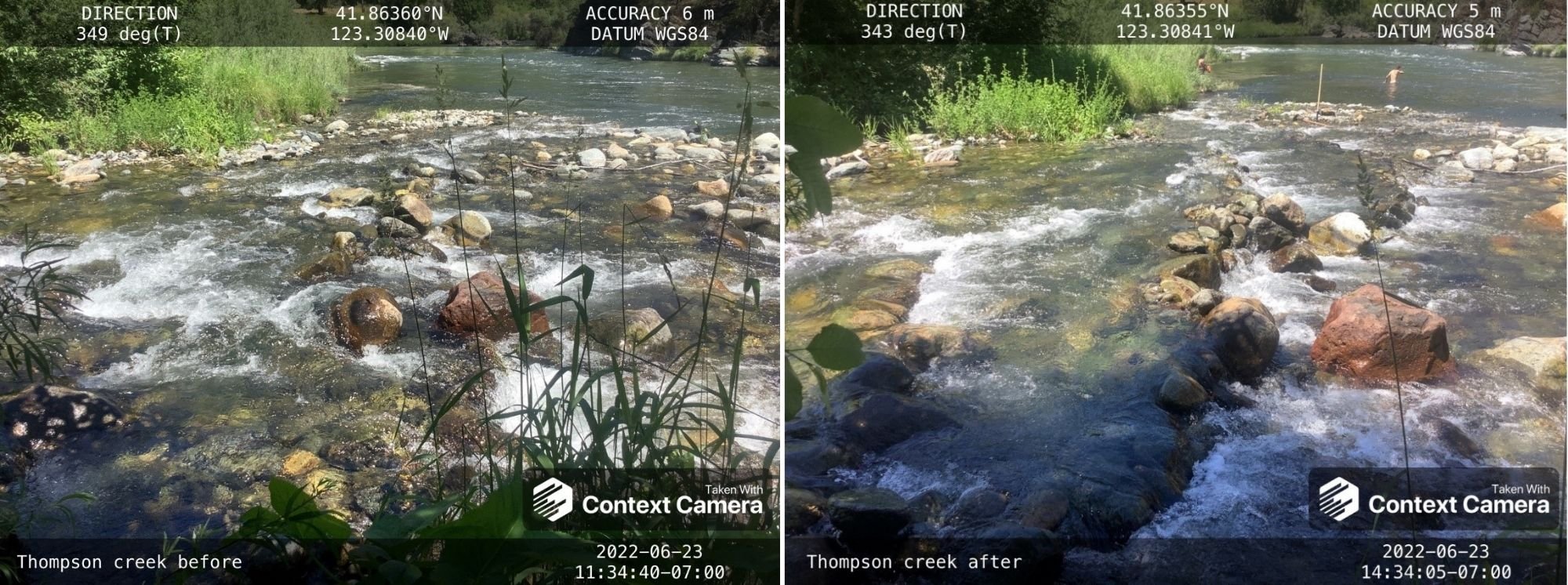Creek Mouth Enhancement, Summer 2022
Project Description
The Mid Klamath Creek Mouth Enhancement Project is one of the Mid Klamath Watershed Council’s longest running restoration projects, and has been implemented every summer for the past 13 years. This project has focused on improving access to cold water refugia for out-migrating juvenile salmonids and upriver adult migrants by remediating seasonal barriers to migration and enhancing creek mouths to ease passage into important cold water habitat. The barriers encountered are typically anthropogenic, such as swimmer/mining dams, low flow barriers, and road crossings. During the summer of 2022, our survey crews assessed 41 creeks for migration barriers, and improved access to 7.75 miles of cold water habitat for anadromous fish species (Oncorhynchus spp.). MKWC identified 16 barriers, and treated 14 of the barriers that were disrupting migratory patterns or seasonal use for either adult or juvenile salmonids. These barriers consisted of swimmer’s dams, large log/debris jams, boulder/bedrock cascades, a clogged fish ladder, and low and high velocities located at the confluences of the tributaries.
Methods
The crew of field technicians conducted snorkel surveys on the first 1000 feet of each tributary (where appropriate) to survey for fish abundance, distribution, size, and habitat use. During these 1000 foot surveys, creeks were assessed for any barriers and were typically treated by concentrating flow, building fish step pools, or diverting water to a lower slope channel. The primary work conducted by the Fish Passage crew was site specific fish passage design and implementation. This involved manually moving boulders as well as rocks and gravel to reduce gradients, create step pools, maintain surface water connections and remove barriers to passage. Depending on the creek and time of year, we often built wing dams to consolidate flows, excavated gravels by hand to deepen the channel and focused cold water into areas of the Klamath River confluence where it would create the largest most stable thermal refuges. Our work is prioritized for juvenile Coho utilization in the spring and summer months, transitioning to adult fish passage projects in the fall and winter. Artificial barriers (i.e. swimmers dams) were also treated, as well as debris jams which can create fish impassable barriers.
Step pool construction was the most common form of creek mouth enhancement for juvenile passage while concentrating flow was the most common treatment for adult migration enhancement. Barrier identification was made using the CDFW Salmonid Stream Habitat Restoration Manual, and data for each barrier was collected during assessment, including pool depth, height of barrier, and slope. Following assessments, field crews would implement treatment by building step pools boulders to increase depth, restrict discharge, improve flow duration, and create unimpeded connections rather than sudden drops. Post work data was collected at each tributary.
Post Work Monitoring
MKWC monitored the success of our implementation to assess Coho, Chinook, and steelhead abundance in response to the treated barriers. While Coho were our target species, both Chinook and steelhead were observed in large numbers at several sites before and after treatments. Barriers can be developed through a broad range of flow conditions disrupting migratory patterns and seasonal use. With returning adult fish in the river and low flows, MKWC staff will continually monitor important tributaries for fish barriers and modify (if possible) any barriers encountered. To quantify physical and biological responses, data entry and management elements, including editing for errors, and verifying accuracy of field data is also being organized. Annual monitoring is being performed to assess Coho distribution in response to barriers.
Results
Much effort has been devoted to developing, constructing, and refining fish passage to enable target species to pass barriers on tributaries along the Mid Klamath River basin. MKWC field crews assessed 41 tributaries, resulting in 7.75 miles of assessment of instream fish habitat and identified 16 barriers to either juvenile or adult migration. MKWC staff identified 16 barriers, of which 14 were treated for either juvenile or adult passage. Seven barriers were recently identified, mostly swimmers’ dams, and do not have post monitoring data currently. These were identified in early September. MKWC was not able to conduct a monitoring assessment on one treated barrier. MKWC documented increases of salmonid abundance in 8 of the 14 treated tributaries with identified barriers. Of the 41 treated tributaries, over 80% of tributaries had a documented increase in salmonid presence after treatments occurred. Of barriers that had post work monitoring conducted, MKWC staff documented only one creek with a significant % increase in Coho Salmon above barriers after work was completed (2 Coho before, 50 Coho after). While Coho Salmon were our target species for this project, MKWC frequently documented Chinook and steelhead utilizing tributaries after creek mouth or barrier remediation work had occurred.
Fish Passage Crew
Devin Finegan, Crew Leader
Amanaka Yancey, Field Technician
Bryan Souza, Field Technician
Che-mooch McCovey, Field Technician
Lauren Zygmont, Field Technician






